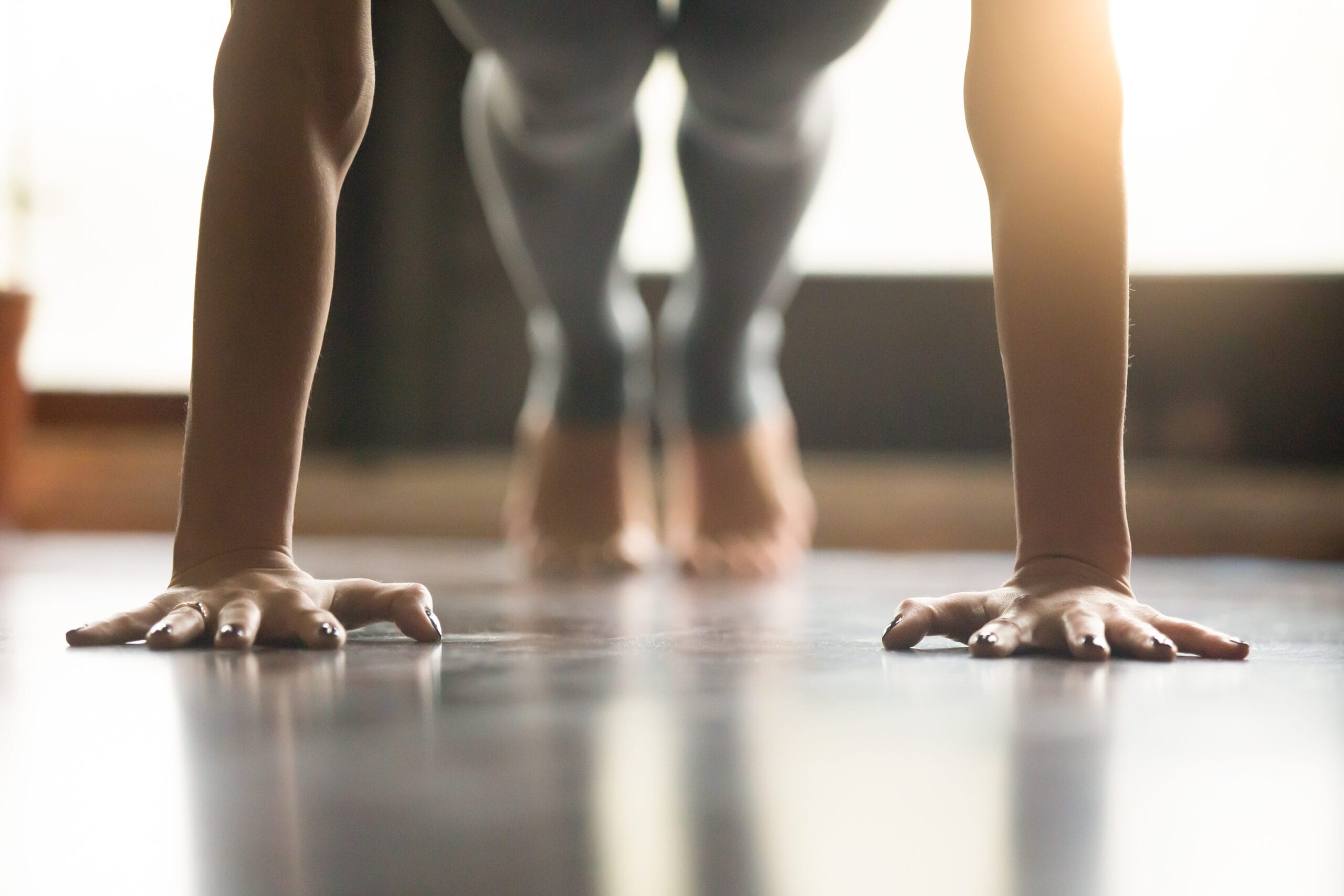
I know we’ve all been told that just getting up and walking can be great exercise and the Fitbit folks have got us all thinking that hitting 10,000 steps a day will help us shed away any unwanted weight and keep us healthy.
But is it realistic to expect to lose any real weight by just walking on a treadmill?
Is walking really all it takes to lose weight??
Of course you can you lose weight walking on a treadmill, it’s exercise isn’t it?!?
I hope you forgive me for playing devils advocate there for a second, but I like to have a little fun every now and then.
In all seriousness, walking can be a powerful tool for weight loss, especially for folks who find running or other modes of exercise painful or monotonous.
The key is exercising at an intensity high enough to help you burn more calories than you’re consuming each day.
And don’t worry, walking on a treadmill can certainly do just that.
As I plan to prove down below with some specific examples, you can burn all kinds of calories walking on a treadmill.
Weight Loss 101
There are a lot of confusing diet plans and weight loss programs out there these days and sometimes I think we get so caught up with the fine details that we lose the big picture.
You know, something about not seeing the forest for the trees…
It’s completely understandable.
I mean every day it seems research tells us that we can’t eat this or can’t eat that, or we can only eat this and that between these hours of the day, but only when facing due North…
I know there are a lot of legit diet plans out there that can be very helpful with showing people the types of foods they should eat and avoid in order to be healthier.
But I’m old school.
I always come back to the classic equation: if I burn more calories than I consume, I should eventually start losing weight.
For me, this has always worked.
And if you think about a lot of the diet plans out there (Atkins, Keto, Whole Food, etc), they’re really just coming up with ways to cut the junk food out of your diets.
Cutting carbs and processed foods out of the equation is going to significantly decrease the amount of calories most of us are used to consuming.
And by replacing those simple carbs with wholesome fruits and vegetables is likely going to get more fiber in your diet, which will not only help your body in several ways, but also make you feel fuller.
But I still say it all comes down to eating fewer overall calories- regardless of your method of doing that.
But when it comes to weight loss, there’s another side to that equation- the calories being burned.
Regardless of how many calories I eat in a day, if I’m active enough to burn off all of ’em up and then some, then my body will have to use some of my stored fat for energy.
This is why elite athletes have to eat so much.
I remember back in the day hearing what Michael Phelps’ diet looked like while training – this dude ate like 10,000 calories/day and included all kinds of tasty stuff like pizza, pasta, and all kinds of (white) bread.
And he still had a muscular physique and like 8% body fat.
This is because that dude trained 6-8 hrs a day, burning 1000 calories an hour in the pool.
So, if he’s eating 10,000 calories a day, but still burning that same amount, he isn’t going to gain weight.
Losing weight is all about taking in less than you put out – you can do this by eating less, exercising more, or preferably a combination of the 2.
Walking On A Treadmill For Weight Loss

Ok, I think I made my point there.
Now let’s talk about how we can use treadmill walking as a potent exercise for burning those calories.
A lot of us might want to look down on walking as an “easy” exercise, but like every other type of activity, you can adjust the intensity of walking to meet your needs.
Like any other activity that gets your heart rate up, walking can also provide all kinds of other health benefits besides weight loss- improved heart health, improved lower body strength, improved endurance, etc.
And the great thing about walking is that a lot of people can do it comfortably.
Folks that have pain or discomfort with running can often walk without any issues.
But remember, if you’re trying to lose weight, you have to find a way to burn more calories than you’re eating.
Eating fewer calories through diet changes can do this, but it’s easier if you exercise and burn more calories at the same time.
Personally, I’ve always been better at burning more calories than restricting my calorie intake, but to each their own.
In order to show how awesome walking can be for burning calories, I did a little research on my treadmill.
Using my Horizon 7.8 AT, I walked at a few different speeds and conditions to see how many calories the machine said I burned.
Now before you say anything, I know fitness machines are notorious for over-estimating how many calories they say are being burned, so I know these numbers probably aren’t super accurate.
But that’s ok – the point I’m trying to prove here is still valid, just wait for it.
Another thing worth pointing out when it comes to calorie expenditure: the larger you are, the more calories you’re going to burn doing any activity.
This is why treadmills and any other fitness machine ask for your weight – they use this to calculate how many calories you’re burning.
It takes more energy to move a 250 lb person vs a 200 lb person, meaning the 250 lb person will burn more calories doing the same task the 200 lb person is doing.
Make sense?
For the following scenarios, keep in mind these calorie burn rates are calculated for me, a 200 lb man, on my treadmill.
Your actual calorie expenditure might vary.
| Speed (mph) | Incline | Calories Burned |
|---|---|---|
| 3.5 mph | 0% | 5 cal/min |
| 3.5 mph | 3% | 8 cal/min |
| 3.5 mph | 6% | 10 cal/min |
| 3.5 mph | 9% | 12 cal/min |
| 3.5 mph | 12% | 15 cal/min |
| 4.0 mph | 0% | 6 cal/min |
| 4.0 mph | 3% | 9 cal/min |
| 4.0 mph | 6% | 11 cal/min |
| 4.0 mph | 9% | 14 cal/min |
| 4.0 mph | 12% | 17 cal/min |
| 6 mph | 0% | 16 cal/min |
Ok, a few things I want to point out.
First of all, increasing my walking speed from 3.5 mph to 4.0 mph didn’t make a huge difference in my calorie expenditure – only about a difference of 1-2 calories/min.
For me, 3.5 mph is a comfortable walking pace. 4 mph is doable for exercise, but that’s a bit faster than my preferred walking pace.
Something else I find interesting is that my calorie expenditure basically goes up 1 cal/min for every 1% of incline I add.
This means adding incline is a great way to significantly increase your calorie expenditure while walking on a treadmill.
My brothers have been using incline walking for exercise and weight management for years and now I see why – this stuff works.
Speaking of incline, I don’t do a lot of incline walking on my treadmill, but I do some and I know I wouldn’t be able to maintain an incline level of 9 – 12% for my entire workout.
And that’s ok.
When implementing incline work, you can always use that to create your own intervals as you would running.
Fluctuate between different incline levels, staying at each one for whatever time period you like.
For example, one of my brothers told me he does 5 min increments- he walks at a 3.5 mph pace the entire time, but fluctuates between 3%, 6%, and 9% inclines.
Changing the incline every 5 min.
And he does this for an hour.
Based on my numbers, I would burn at least 600 calories doing that (average fo 10 cal/min).
That’s a ton of calories to burn “just” walking on a treadmill!
The last thing I wanted to point out from my chart is that I was burning about 16 cal/min running at a 6 mph pace.
I was able to basically match that output by walking at 3.5 mph on a 12% incline…interesting.
Final Thoughts
My point with this little experiment is to show that you can burn some serious calories walking on a treadmill.
And if you’re trying to lose weight, walking can be a powerful mode of exercise to help you reach your goals. Because like I said, the key to losing weight is burning more calories than you consume.
When walking on a treadmill, using the incline function can significantly increase the intensity of your workouts.
And as my chart shows, you get more result from upping the incline than you do by upping the speed.
Based on this, I would say it makes more sense to walk a little slower against a higher incline than to walk faster against a lower incline (at least when it comes to calorie expenditure).
And something I just noticed – some of my above numbers might actually be too low.
Most people burn 120 – 150 calories per mile when walking/jogging (and I tend to be around 150 cal/mile)…
Based on my chart, I’d only burn 90 calories walking 4 mph on a flat incline: 6 cal/min x 15 min = 90 calories…
Well, I told ya my numbers probably aren’t that accurate, oh well.
Anyway, the takeaway is that yes, you can lose weight walking on a treadmill- it’s all about burning those calories.
Now get out there and start walking.


